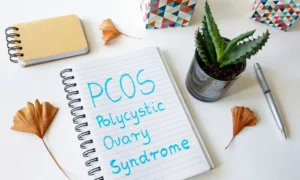Polycystic Ovarian Syndrome (PCOS) is a condition that affects millions of women worldwide, causing hormonal imbalances and a range of symptoms. For many, traditional treatments have been the go-to option, but the emergence of laser treatment brings a new ray of hope. In this article, we’ll delve into the intricacies of laser treatment for polycystic ovaries, exploring its advantages, the treatment process, and more.
Contents
Understanding PCOS 
PCOS stands for Polycystic Ovary Syndrome. It is a common hormonal disorder that affects people with ovaries, typically during their reproductive years. In PCOS, the ovaries may develop small fluid-filled sacs called cysts, which can interfere with the normal release of eggs. The exact cause of PCOS is not known, but it involves a combination of genetic and environmental factors.
Some common symptoms of PCOS include irregular menstrual cycles, excess androgen (male hormone) levels, and cysts on the ovaries. Other manifestations can include acne, excessive hair growth, weight gain, and fertility issues. PCOS is also associated with an increased risk of developing conditions such as type 2 diabetes, high blood pressure, and heart disease.
Overview Of Laser Treatment
Laser treatment, or laser therapy, involves the use of focused and intense beams of light to treat various medical and cosmetic conditions. The term “laser” stands for “light amplification by stimulated emission of radiation.” The focused light energy released by a laser can be accurately directed, enabling precise and controlled medical procedures.
Laser therapies are frequently selected for their accuracy, limited invasiveness, and capacity to pinpoint particular tissues without impacting surrounding areas. Nevertheless, the effectiveness and safety of laser therapies rely on the particular condition under consideration, the specific type of laser employed, and the proficiency of the healthcare professional conducting the procedure.
What Causes Polycystic Ovaries? 
Polycystic Ovary Syndrome (PCOS) is a complex hormonal disorder, and its exact cause is not fully understood. However, several factors are believed to contribute to the development of polycystic ovaries. These factors include:
- Genetics: There appears to be a genetic component to PCOS. If someone in your family, such as a mother or sister, has PCOS, you may be at a higher risk of developing it.
- Insulin Resistance: Insulin is a hormone that helps regulate blood sugar levels. Individuals with insulin resistance have cells that do not respond properly to insulin, leading to an increase in insulin production. Elevated insulin levels can contribute to the overproduction of androgens (male hormones), disrupting the normal menstrual cycle and leading to the symptoms associated with PCOS.
- Hormonal Imbalance: PCOS is characterized by an imbalance in reproductive hormones, particularly an elevated level of androgens (such as testosterone). This hormonal imbalance can affect the development and release of eggs during the menstrual cycle.
- Inflammation: Chronic low-grade inflammation may play a role in the development of PCOS. Inflammation can contribute to insulin resistance and disrupt normal ovarian function.
- Lifestyle Factors: Obesity is often associated with PCOS, and excess weight can contribute to insulin resistance. Maintaining a healthy lifestyle through regular exercise and a balanced diet may help manage symptoms and improve overall health.
PCOS manifests differently in different individuals, and the combination of factors contributing to its development can vary. Treatment approaches often focus on managing symptoms and may include lifestyle modifications, hormonal contraceptives, and medications to address specific concerns, such as insulin resistance.
How Does Laser Treatment Work For PCOS?
Laparoscopic ovarian drilling is a surgical intervention for polycystic ovary syndrome (PCOS) designed to enhance ovulation. During this procedure, either electrocautery or a laser is employed to eliminate or destroy specific portions of the ovaries.
While not widely operated, this surgery may be considered an option if attempts to induce ovulation through weight loss and fertility medications have proven ineffective.
- Typically performed through a small incision using laparoscopy under general anesthesia, the surgeon initiates the procedure with a small incision near the belly button.
- To enable the safe insertion of the viewing tool (laparoscope) without causing harm to internal organs, a tube is inserted to introduce a small amount of air and inflate the belly.
- The surgeon, guided by the laparoscope, examines the internal organs and may introduce surgical tools through the same incision or additional small incisions in the pelvic region.
Benefits Of Laser Treatment For Polycystic Ovaries 
- Reduced Recovery Time
Minimal incisions and less tissue damage contribute to quicker recovery periods for patients undergoing laser treatment. - Minimal Scarring
The precision of lasers minimizes scarring, addressing a common concern for individuals considering surgical interventions. - Improved Fertility
Laser treatment has shown promise in enhancing fertility for women with PCOS, opening doors for those seeking to start or expand their families.
Choosing Laser Treatment Wisely
- Considerations Before Opting
Encouraging individuals to consider various factors before opting for laser treatment ensures informed decision-making aligned with their specific needs. - Second Opinions
Seeking second opinions allows patients to gather diverse perspectives and make well-rounded choices regarding their healthcare. - Making Informed Decisions
Empowering individuals with the information needed to make informed decisions contributes to a positive healthcare experience.





